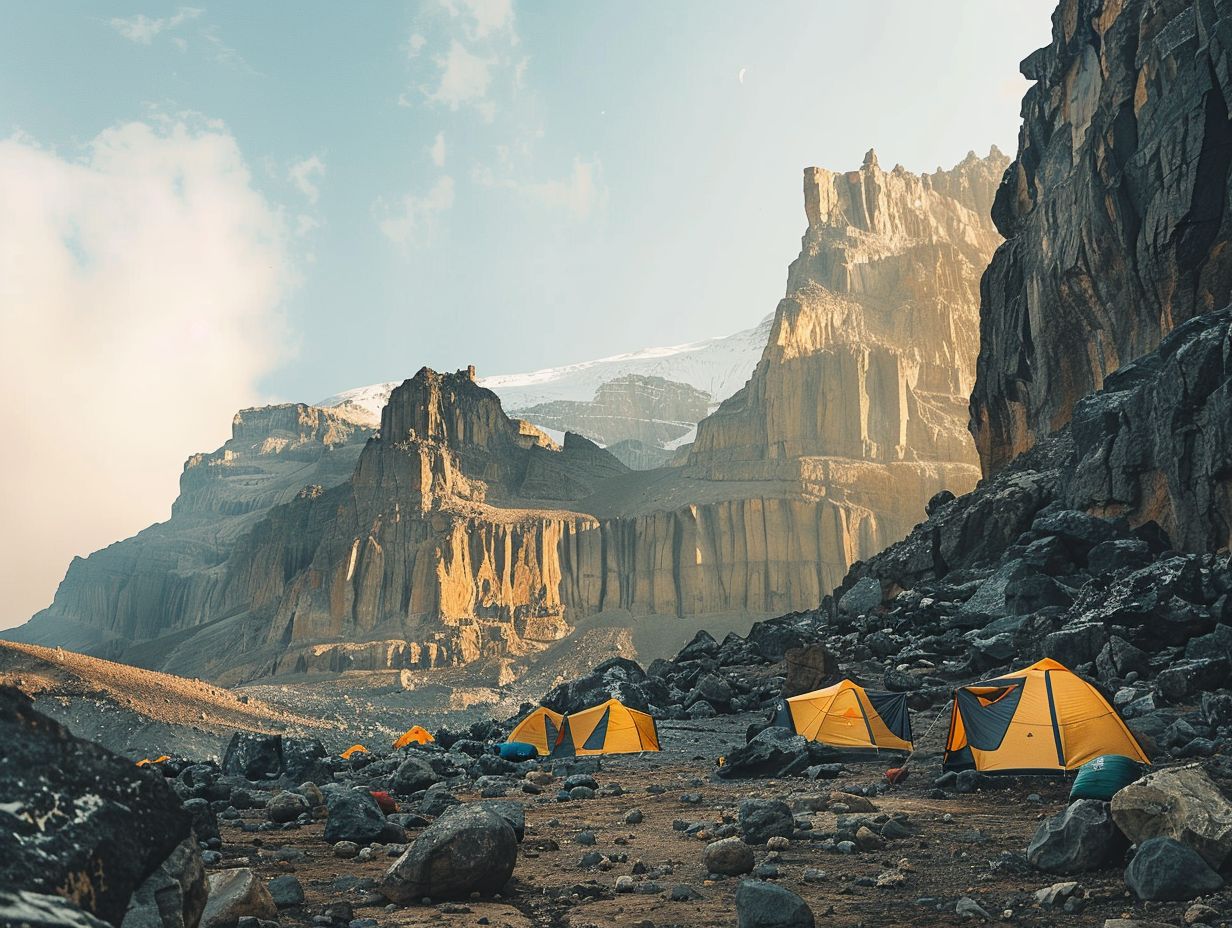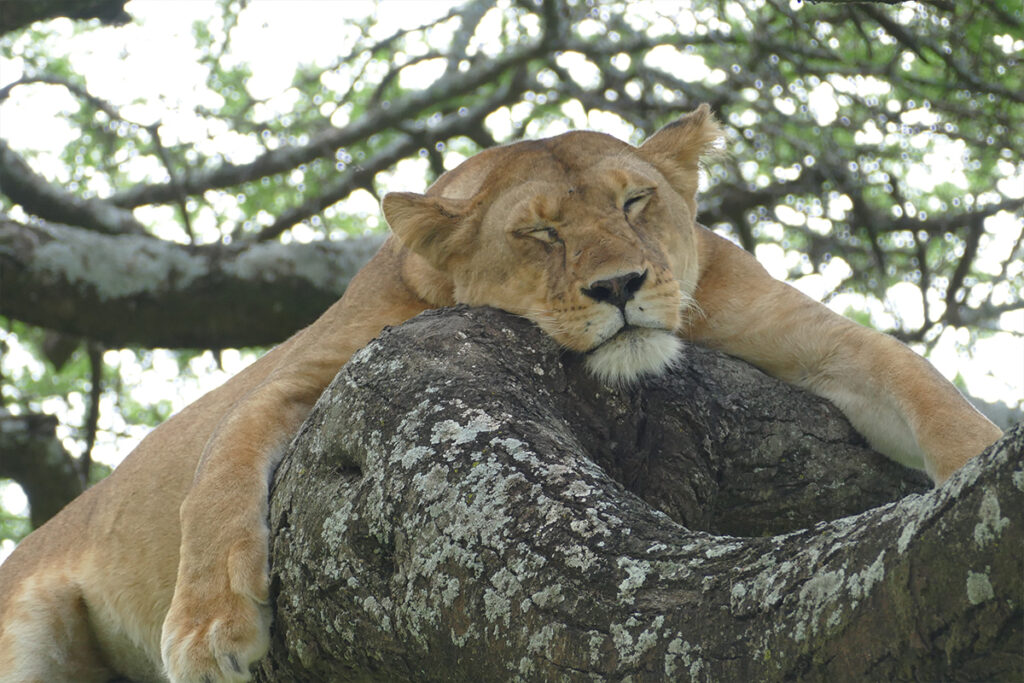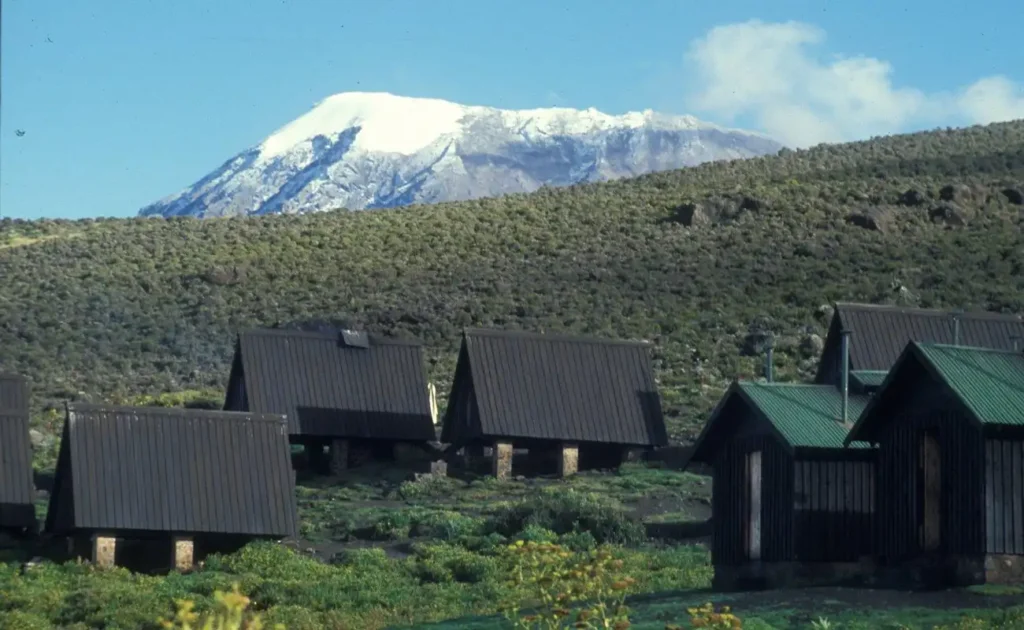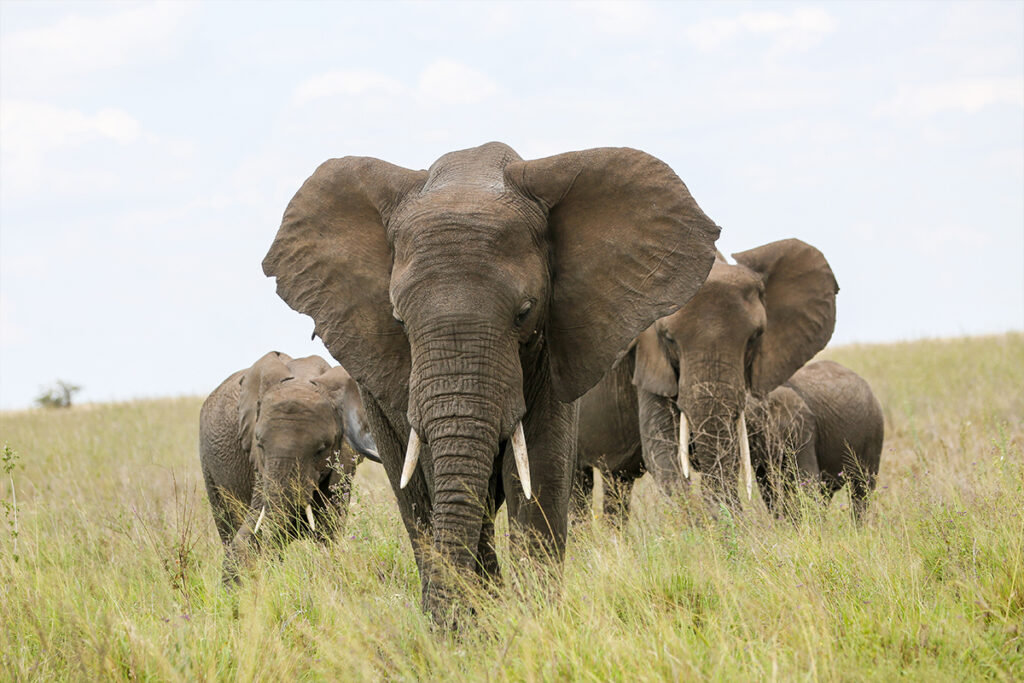Standing at an impressive 4,642 meters, Lava Tower is not just another stop on your Kilimanjaro trek; it is a geological marvel that beckons trekkers with its towering presence. The sheer size and abrupt appearance of this volcanic plug, amid the desolate landscape, can take even a seasoned climber by surprise. For many, reaching Lava Tower represents conquering not only an important acclimatization point but also a significant psychological milestone.
Historically, Lava Tower was formed during Kilimanjaro’s volcanic activity that dates back thousands of years, providing a tangible reminder of the mountain’s fiery origins. Research conducted over the years shows that spending time here, in the midst of the trek, can significantly improve climbers’ adaptation to high altitudes, increasing their chances of successfully summiting the peak. This makes Lava Tower not merely a point of interest but a critical component of the overall trekking strategy.

Lava Tower: A Geological Marvel on the Kilimanjaro Trek
Lava Tower, standing tall at 4,642 meters, is a striking geological feature of Mount Kilimanjaro. This massive rock formation is a volcanic plug, resulting from molten lava that hardened within a vent on an active volcano. Over thousands of years, erosion stripped away the surrounding rock, leaving the tower standing prominently against the barren landscape. Its rugged appearance makes it a distinctive and memorable site for trekkers. For many, it is a highlight of the ascent, offering both a challenge and a reward.
The tower’s formation dates back millions of years when Kilimanjaro was an active volcano. Today, it serves as a reminder of the mountain’s fiery past. The rock’s unique shape and height make it a popular spot for climbers to explore and photograph. Visitors often marvel at the sheer vertical cliffs and the breathtaking views from the base of the tower. Despite its rugged look, it is a critical part of the trek, both for acclimatization and the overall experience.
Climbers reaching Lava Tower find it to be an essential stop for acclimatization. During the trek, spending time at this altitude helps the body adjust to lower oxygen levels, which is crucial for making the final ascent to Kilimanjaro’s peak. The tower’s rock formation also provides a different climbing experience compared to the usual rocky paths. This acclimatization phase aids in preventing altitude sickness, ensuring a safer journey upwards.
Besides its geological significance, Lava Tower is also a hub for biological study. The unique conditions around the tower support various plant and animal species adapted to the high altitude. Scientists and nature enthusiasts alike visit this site to study its rare flora and fauna. Through careful observation and research, they gain insights into the adaptations that make life possible in such harsh environments. This aspect adds another layer of interest for trekkers, combining natural beauty with scientific wonder.
Kilimanjaro Climb – Robinson on The Lava Tower
The Formation of Lava Tower
Lava Tower, a prominent feature on Kilimanjaro, formed during a dramatic volcanic past. When lava erupted from the volcano, it cooled inside a vent, solidifying into a tall, rocky structure. Over time, weather and erosion wore away surrounding softer rock, leaving the harder plug. This impressive process took place over thousands of years. Now, Lava Tower stands as a testament to Earth’s dynamic processes.
The tower’s creation involved intense volcanic activity that shaped the Kilimanjaro landscape. During eruptions, magma rose through a vent, encountering lower temperatures and hardening quickly. This rapid cooling process is key to forming such rock formations. As layers of ash and softer materials eroded, the resilient lava remained. This process distinguishes the tower from other areas on the mountain.
Geologists find Lava Tower a fascinating study for understanding volcanic activity. They analyze rock samples to learn more about Kilimanjaro’s eruption history. This exploration provides clues about the mineral composition and cooling rates. The insights gained here can help predict future volcanic behavior. Such studies contribute to greater knowledge of volcanic landscapes worldwide.
Trekking to Lava Tower is not only an adventure but also an opportunity to see geology in action. Climbers can observe distinct layers and textures in the rock. This natural monument attracts visitors eager to explore its nooks and crannies. Understanding its formation adds depth to the climbing experience. It’s a rare chance to witness immense geological forces at work.
Reaching The Lava Tower: A Significant Milestone
Reaching Lava Tower is a noteworthy achievement for trekkers on Kilimanjaro. Standing at 4,642 meters, this high-altitude spot offers breathtaking views. The trek to the tower serves as a critical acclimatization point, helping climbers adjust to the reduced oxygen levels. Many climbers pause here, taking time to rest and take in the scenery. It marks a pivotal moment in the journey to the summit.
The journey to Lava Tower can be challenging but rewarding. Climbers often head to this point from Barranco Camp, navigating steep paths and rocky terrain. The trek usually takes about six to seven hours, with sections requiring careful footing. Upon arrival, trekkers are greeted by the towering rock formation. Its imposing height and stark features stand out against the rocky landscape.
Aside from being a physical milestone, reaching Lava Tower boosts morale. Climbers often feel a sense of accomplishment upon arrival. The tower’s unique landscape provides an excellent backdrop for photos and a chance to bond with fellow trekkers. This shared experience creates lasting memories and camaraderie. Moreover, it offers an opportunity to reflect on the journey so far.
For some, Lava Tower is more than just a waypoint; it’s a goal in itself. Even if they don’t plan to summit, reaching this point is a significant achievement. The altitude and views provide a taste of the Kilimanjaro experience. This makes it a popular destination for both serious climbers and casual adventurers alike. It symbolizes the spirit of persistence and adventure.
The Role of Lava Tower in Altitude Acclimatization
Lava Tower plays a crucial role in helping trekkers acclimatize to higher altitudes on Kilimanjaro. The tower’s elevation, at over 4,600 meters, is ideal for getting the body used to thinner air. Spending time here allows climbers to adjust gradually, reducing the risk of altitude sickness. Trekkers often rest, eat, and hydrate at this spot to help their bodies adapt. This makes the tower a key part of the climb strategy.
The process of acclimatization involves giving the body time to adapt to lower oxygen levels. By ascending to Lava Tower and then descending to sleep at a lower altitude, typically at Barranco Camp, climbers practice “climb high, sleep low,” a recommended acclimatization method. This approach helps improve the efficiency of oxygen use in the body. It also enhances endurance for the climb to the summit. This method is widely used by seasoned climbers.
Research shows that high-altitude acclimatization requires patience and time. During the trek, climbers can experience shortness of breath and fatigue. By pausing at Lava Tower, these symptoms can be reduced. This stop allows the body’s systems to adapt, ensuring a more comfortable ascent. This strategic pause improves overall hike success rates.
For novice climbers, understanding the importance of acclimatization can be empowering. Having planned stops like at Lava Tower makes preparation easier. Trekking guides emphasize its significance for safety and success. There, hikers can learn about their body’s response to the high altitude. This knowledge can enhance the trekking experience.
The acclimatization process isn’t just about physical adjustment; it’s also mental preparation. Spending time at Lava Tower gives climbers a chance to reset and recharge. The breathtaking views provide motivation and remind trekkers of the adventure’s rewards. This mental break can be just as important as the physical rest. It’s a time to build confidence for the next stage.
Lava Tower: A Key Component of the Trek Strategy
Lava Tower is a crucial part of Kilimanjaro’s trek strategy, acting as both a challenge and an opportunity for climbers. The stop provides an essential acclimatization break, allowing climbers to adjust gradually to the high altitudes. This scheduled pause is a pivotal moment in the trek, offering rest and recovery time. It ensures that climbers are better prepared for the higher altitudes ahead. Incorporating this stop can significantly improve the chances of reaching the summit.
Guides often incorporate Lava Tower into itineraries because of its strategic benefits. They understand that acclimatization is key to a successful climb. By spending time at this high point, trekkers can better manage the effects of altitude sickness. This can make the difference between turning back and continuing to the top. The tower’s elevation makes it a perfect acclimatization spot.
Many trekking routes on Kilimanjaro include a visit to Lava Tower. Popular routes like the Machame and Lemosho routes specifically plan for this stop. The climb from Barranco Camp to Lava Tower takes several hours and pushes climbers out of their comfort zones. But the effort is worth it. These routes are designed to maximize acclimatization and enhance the overall trekking experience.
A positive psychological impact also comes from reaching Lava Tower. Climbers feel a great sense of accomplishment when they reach this key point. It’s a clear marker of progress and encourages continued effort toward the summit. This boost in morale can be crucial in the tough stages that follow. Visualizing the goal becomes easier with such milestones along the way.
The unique landscape around Lava Tower also provides a change of scenery. The rocky, volcanic terrain contrasts sharply with the lower forested sections of the trek. This variation keeps the journey interesting and engaging. Trekkers can experience different aspects of Kilimanjaro’s diverse environment. It adds to the adventure and excitement of the climb.
Key Takeaways
- Lava Tower stands at 4,642 meters on Mount Kilimanjaro.
- It serves as a critical acclimatization point for climbers.
- The tower was formed by ancient volcanic activity.
- Trek to Lava Tower is both challenging and rewarding.
- Reaching Lava Tower boosts morale and marks trek progress.




